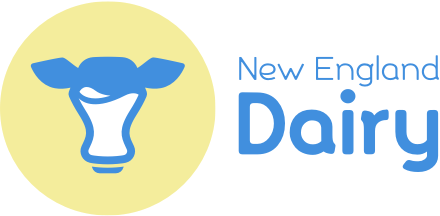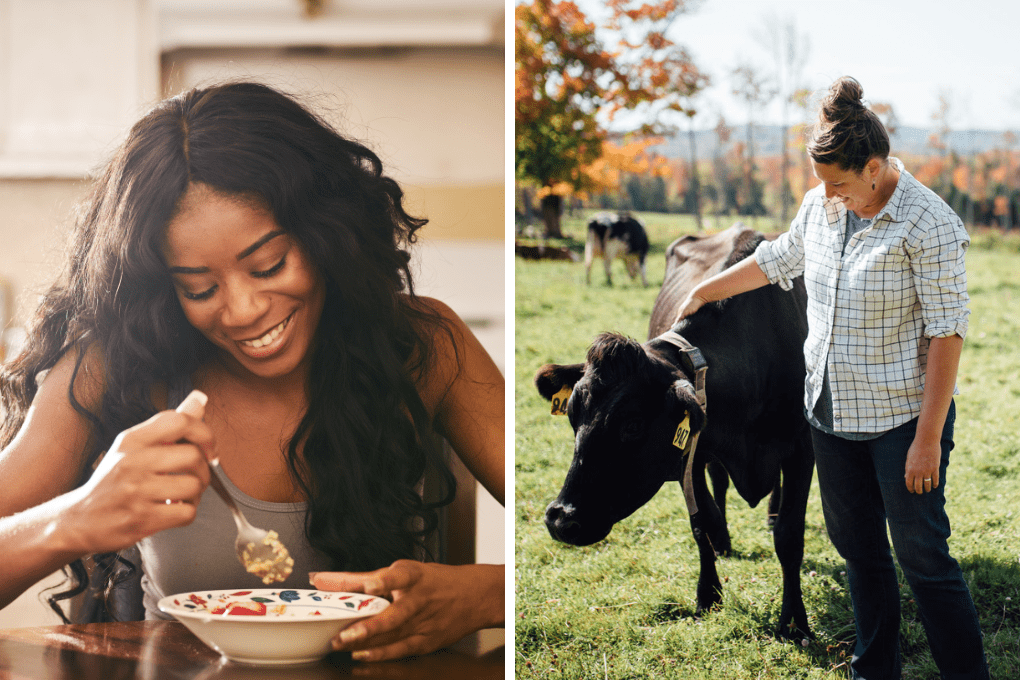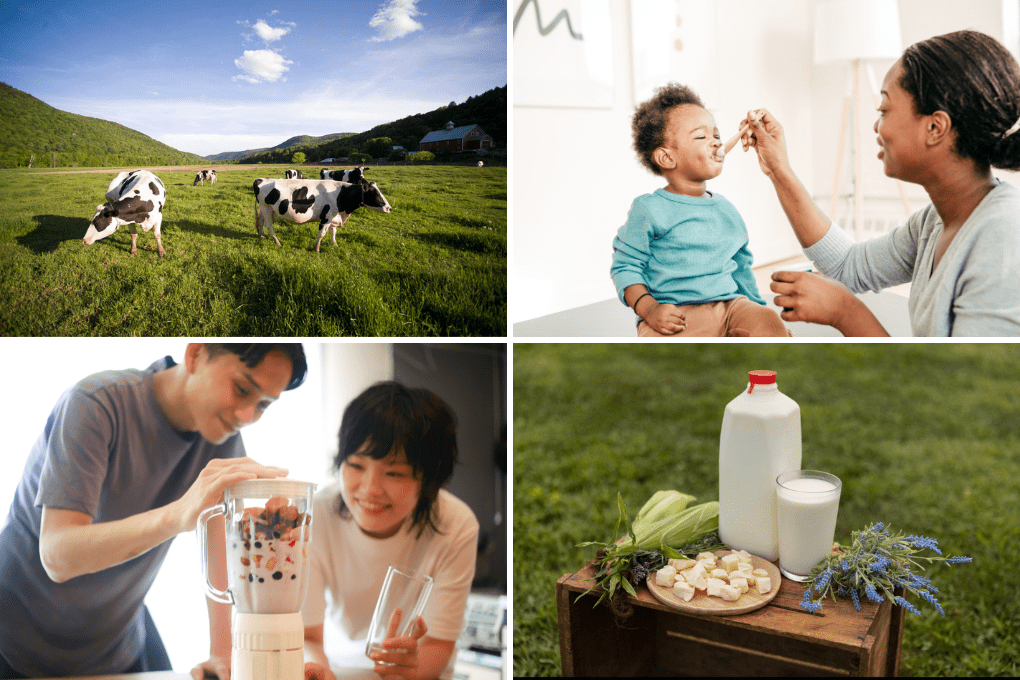Sustainable Nutrition FAQs
Sustainable eating is about choosing foods that are good for the health of our bodies and the environment. A sustainable diet is also more than just a diet with a low environmental impact; it is also accessible, affordable, safe, and culturally acceptable.
Sustainable foods are those that nourish people, the planet and communities. Dairy is an example of a sustainable food and the dairy industry is dedicated to addressing climate change and water quality while providing nutritious and affordable foods that will nourish generations to come.
It’s important to remember that sustainable foods are no longer sustainable if they are wasted. About 40% of food in the U.S. is wasted.
Here are tips to help reduce the amount of food we waste and how we can better honor the harvest.
Dairy accounts for approximately 2% of U.S. total greenhouse gas emissions. As of 2007, producing a gallon of milk uses 90% less land and 65% less water, with a 63% smaller carbon footprint than in 1944.
Also, dairy in the U.S. creates the lowest amount of greenhouse gases per gallon of milk compared to the rest of the world.
Examples of sustainable farming practices include:
- Crop rotation to mitigate weeds and improve soil quality
- Cover crop and no-till planting practices
- Water conservation and stewardship practices
- Utilizing energy efficient technologies and renewable energy sources such as solar wind power
- Anaerobic digester systems allow farmers to convert cow manure and food waste into renewable energy, which can be used for electricity, heat, compressed natural gas, and even vehicle fuel
- Feeding cattle byproducts from the human food supply chain that would otherwise end up in a landfill such as almond hulls, cottonseeds, spent brewers grain, and more


